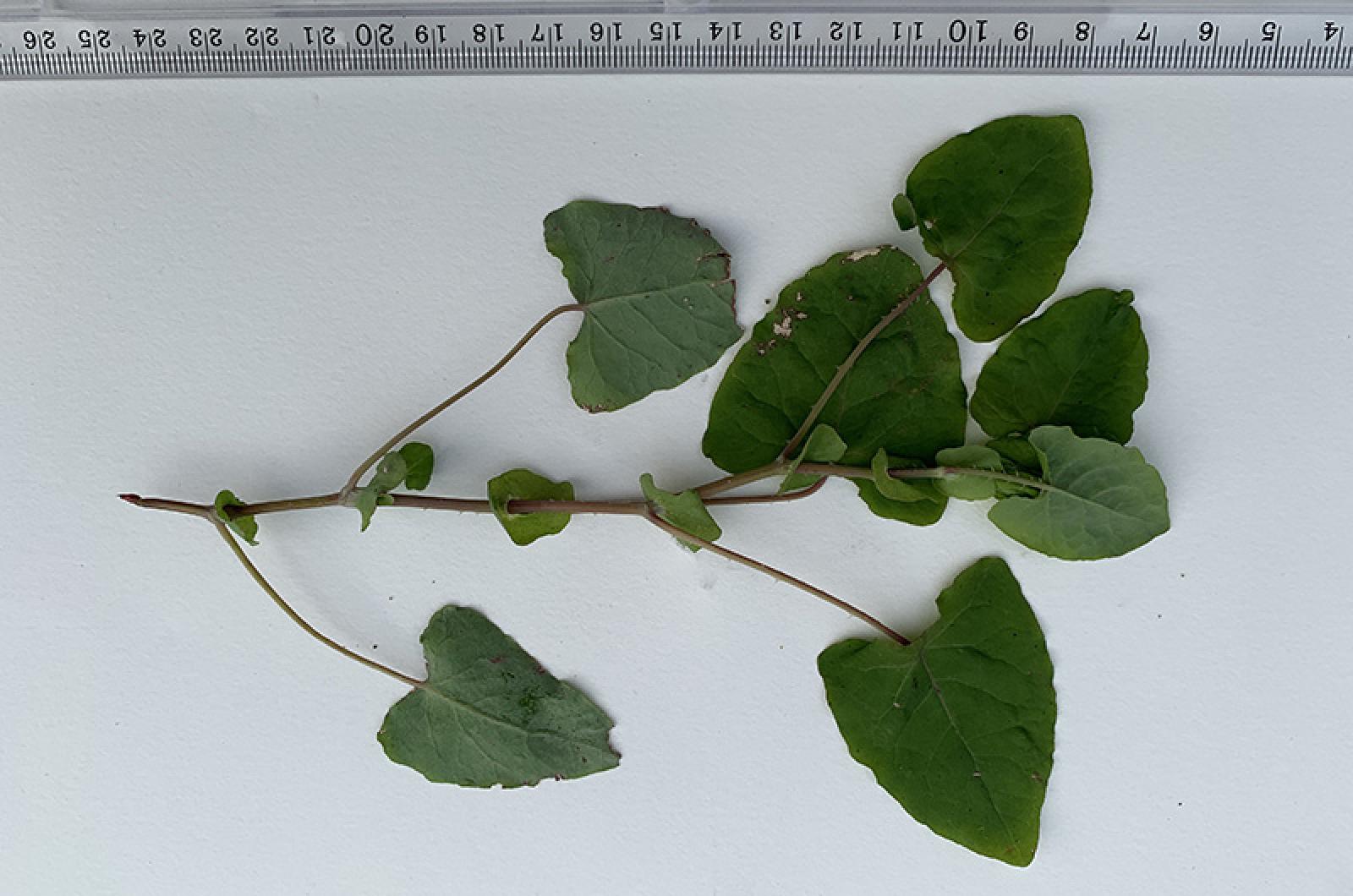The aggressively invasive mile-a-minute vine, or Persicaria perfoliata, was discovered for the first time on the Vineyard near Ben Toms Preserve in Edgartown by Greg Palermo and Margaret Curtin. The vine uses its specially designed prickles to climb over surrounding plants, blocking the sunlight, smothering and eventually killing the plants below.
Mr. Palermo and Ms. Curtin spend much of their spring patrolling for plants. The two volunteer for the Martha’s Vineyard Floralistic Study Group. This group collects and presses specimens to be kept at the Polly Hill Arboretum’s herbarium as well as the New England Botanical Club Herbarium at Harvard University.
“Margaret and I go out plant hunting for this project most non-rainy days during the growing season, which is what we were doing when we happened on the mile-a-minute vine,” said Mr. Palermo. “Neither of us had ever seen it before, but we had seen photos of it — it’s a notorious invasive in the northeast — so we recognized it. We immediately let Julie Russell know about it because the plants are just across a narrow dirt road from the land bank’s Ben Toms Preserve.”
Julie Russell has been an ecologist with the land bank for 20 years. Upon hearing about the discovery of the mile-a-minute vine she promptly organized a “pull” of the plant. Ms. Russell, Mr. Palermo, Ms. Curtin, land bank commissioner Nancy Weaver, and Kristen Geagan of the Sheriff’s Meadow Foundation, all participated in an hour-long removal of all the mile-a-minute plants in sight. Mr. Palermo estimates close to 1,000 plants were removed.
Ms. Russell marveled at the vine’s knack for survival. “These things have had an intense evolution,” she said. “If the earth goes belly up, well, these things will survive.”
For Mr. Palermo, what makes this plant unstoppable is its independence. “Mile-a-minute vine doesn’t need a partner plant to pollinate it,” he said. “A single plant can produce seed on its own. When a bird drops a lone seed, that seed is fully capable of forming a viable plant, and that single plant is fully capable of forming a new colony.”
This week’s removal does not guarantee that colonies won’t continue to appear at the site. Volunteers will return several times this summer, and in the coming years, to ensure the mile-a-minute is defeated for good.




Comments (1)
Comments
Comment policy »